Collaboration and digital workflow compatibility are central to achieving predictable outcomes in dental implant cases. Procurement teams seeking reliable partners must prioritize labs that combine seamless communication with robust digital tools, ensuring accuracy, faster case handling, and long-term consistency.
Key benchmarks include:
- Data compatibility → STL as the standard file type, secure portals, and strict version control.
- Communication clarity → Responsiveness, clear contacts, and structured feedback loops.
- Digital capabilities → CAD/CAM accuracy, 3D printing support, and virtual planning tools.
- Operational reliability → Consistent turnaround, urgent case adaptability, and scalable delivery.
By focusing on these criteria, procurement managers reduce risks, streamline cross-border collaboration, and establish enduring trust with overseas dental labs. The result is greater efficiency, lower remake rates, and reliable implant restorations that meet global expectations.
Why Collaboration and Digital Workflows Matter in Dental Implant Cases
Smooth collaboration and strong digital workflow compatibility are essential in dental implant cases because they directly affect treatment accuracy, turnaround time, and patient satisfaction. When clinics and labs align on processes and digital standards, remakes decrease, communication becomes faster, and restorations fit more predictably. Procurement teams evaluating implant labs should place collaboration and digital integration at the top of their criteria.
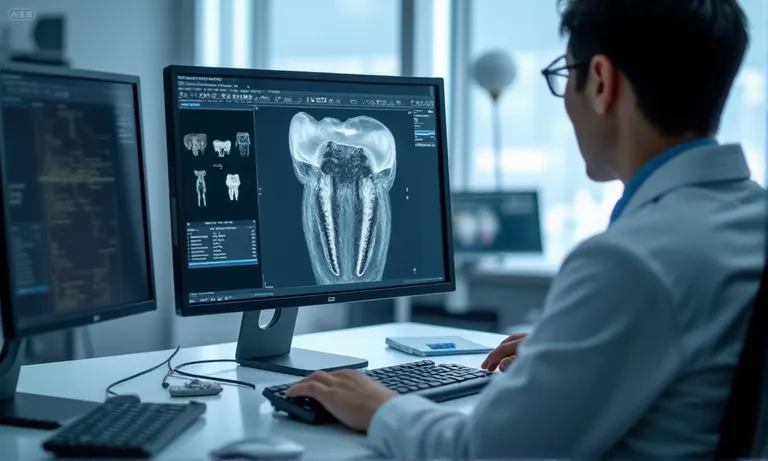
dental-implant-collaboration-digital-workflow
How poor collaboration impacts turnaround time and accuracy
When labs and clinics lack structured collaboration, small misalignments often escalate into costly delays. Missing case details, unclear instructions, or delayed responses may force multiple iterations, stretching production timelines and undermining patient trust. A procurement team should recognize that poor coordination typically translates into higher chairside adjustments and greater logistical complexity.
Why digital workflow compatibility reduces remakes and errors
Digital systems allow labs and clinics to share case files, scans, and designs without the bottlenecks of manual processes. When labs accept and natively process common formats such as STL, the risk of data corruption or interpretation errors decreases. Studies highlight that standardized digital workflows reduce remake rates and ensure consistent quality outcomes.
What procurement teams should prioritize in implant lab partnerships
Procurement teams should evaluate whether a lab demonstrates both collaboration readiness and technical compatibility. This includes clear case intake processes, responsive support staff, and proven experience with multiple implant systems. A lab that consistently invests in digital upgrades and collaborative tools signals long-term reliability, making it a more sustainable partner for practices and DSOs.
How to Ensure File Compatibility and Secure Data Sharing in Implant Workflows
File compatibility and secure data sharing are critical in dental implant workflows because every stage—from intraoral scanning to final restoration—depends on accurate, accessible, and protected digital files. Clinics and labs that align on formats, version control, and data security avoid costly remakes, reduce confusion, and maintain compliance with patient privacy regulations.
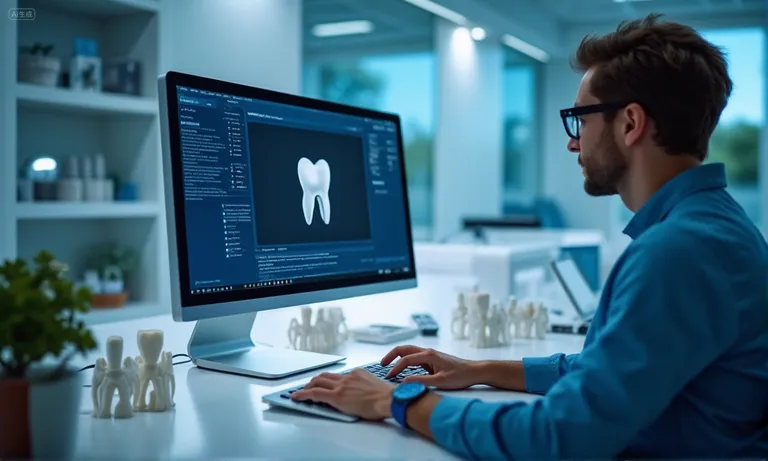
dental-implant-digital-file-compatibility
Why STL is the standard for dental implant workflows
The STL (stereolithography) format has become the universal language for dental CAD/CAM because it ensures accuracy across scanners, design software, and milling machines. Its compatibility allows clinics to share digital impressions with almost any lab, reducing the risk of misinterpretation. While proprietary formats exist, STL’s wide acceptance makes it the most reliable foundation for implant collaboration.
How to manage version control to avoid confusion in cases
Version mix-ups are a leading cause of delays in implant cases. Procurement teams and labs can minimize errors by following structured version control:
- Use consistent file naming conventions that include patient ID, scan date, and version number.
- Adopt centralized storage or cloud portals where all updated files are stored in a single location.
- Confirm latest version before production through a digital checklist or lab management system.
By treating file updates as a traceable process, teams reduce the risk of milling or printing from outdated data.
What secure file portals and HIPAA-compliant platforms to use
Beyond compatibility, secure transfer is a legal and operational requirement. Labs and clinics should evaluate:
- HIPAA-compliant portals such as Medit Link or specialized dental cloud systems.
- End-to-end encryption to protect files during transfer.
- Access control and audit trails to monitor who views or modifies files.
These safeguards protect sensitive patient information and build trust in long-term lab–clinic relationships. For North American practices, the ADA provides a useful reference in its ADA Q&A: HIPAA page, which clarifies HIPAA roles, requirements, and compliance basics.
What Communication Practices Support Smooth Implant Collaboration
Clear and consistent communication is essential to prevent delays, remakes, and misinterpretations in implant workflows. When clinics and labs adopt structured communication practices—dedicated platforms, feedback loops, and defined response protocols—they reduce errors and create predictable collaboration pathways. This not only supports clinical accuracy but also builds long-term trust in procurement partnerships.
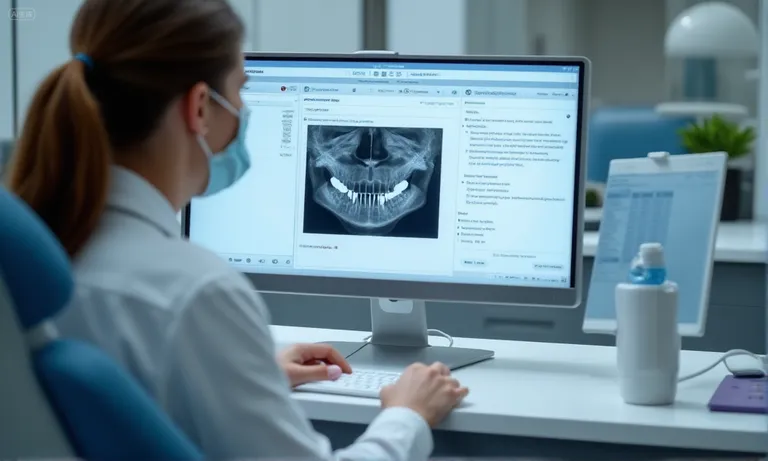
dental-implant-collaboration-communication
How dedicated platforms like 3Shape Communicate improve efficiency
Dedicated communication platforms integrate file sharing, case notes, and instant messaging into a single workflow. Tools like 3Shape Communicate allow dentists to send scans, receive feedback, and track case status without relying on scattered emails. By centralizing collaboration, these platforms reduce information loss and ensure all parties have real-time access to case updates.
Why regular feedback loops between clinic and lab matter
Effective collaboration relies on continuous feedback rather than one-way communication. Procurement teams should prioritize labs that:
- Provide case progress updates at defined milestones.
- Request clarifications early to prevent assumptions in design.
- Offer post-delivery feedback channels to evaluate outcomes and make improvements.
This loop ensures each implant case is refined and supports continuous quality improvement.
How fast response times and clear contacts prevent delays
Even the most advanced tools fail if there is no accountability. Clear communication protocols include:
- Defined response times for case inquiries (e.g., within 24 hours).
- Dedicated contacts for implant-related questions instead of generic hotlines.
- Escalation procedures when urgent clarification is needed.
With these practices, labs demonstrate reliability and clinics avoid unnecessary waiting periods that disrupt patient schedules.
How to Evaluate a Lab’s Digital Tools and Workflow Capabilities
Assessing a dental lab’s digital capabilities is essential to ensure implant restorations are precise, predictable, and efficiently delivered. Procurement teams should focus on whether the lab uses advanced CAD/CAM systems, integrates 3D printing for guides and models, and supports virtual planning tools that enhance surgical accuracy. A lab’s technology stack is a direct reflection of its ability to handle complex cases and collaborate seamlessly across digital workflows.
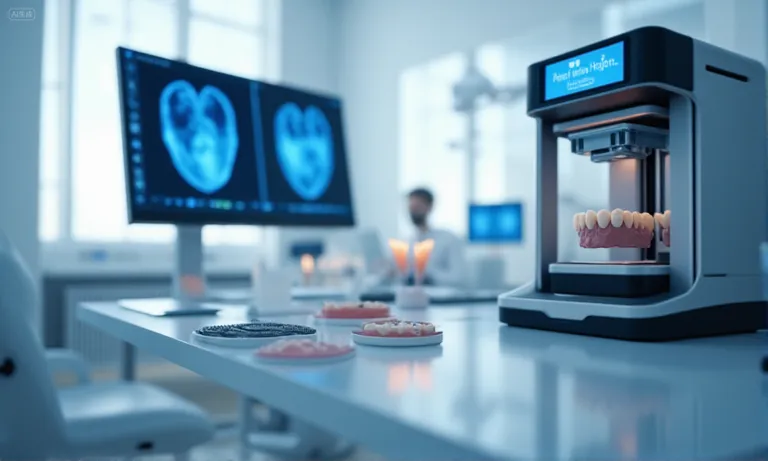
dental-lab-digital-tools-evaluation
What role CAD/CAM systems play in implant precision
CAD/CAM technology is the backbone of digital implant workflows. Advanced systems allow for highly accurate restorations by translating scans into precise milling or printing instructions. Labs with established CAD/CAM expertise minimize human error and deliver consistent quality, which reduces remakes and enhances clinical outcomes.
How 3D printing supports implant guides and restorations
3D printing has become indispensable in implant dentistry because of its speed and flexibility. Labs use 3D printing to create surgical guides, provisional restorations, and diagnostic models. Compared to traditional processes, additive manufacturing allows faster turnaround, improved fit, and lower production costs, particularly for custom or complex implant cases.
Why virtual planning tools enhance predictability and case outcomes
Virtual planning platforms integrate radiographic data with intraoral scans, allowing clinicians and labs to simulate implant placement before surgery. By visualizing bone density, angulation, and prosthetic design, these tools reduce the risk of surgical surprises and improve prosthetic-driven implant planning. Popular tools like coDiagnostiX enable labs to actively participate in planning, ensuring restorations align with surgical realities.
How to Coordinate Turnaround Time and Case Management
Managing turnaround time in implant restorations is a balancing act between speed and quality. Procurement teams should evaluate how a lab structures its production schedules, handles urgent cases, and maintains reliability in global logistics. Consistent delivery builds confidence in long-term partnerships, while a lack of coordination risks patient dissatisfaction and treatment delays.
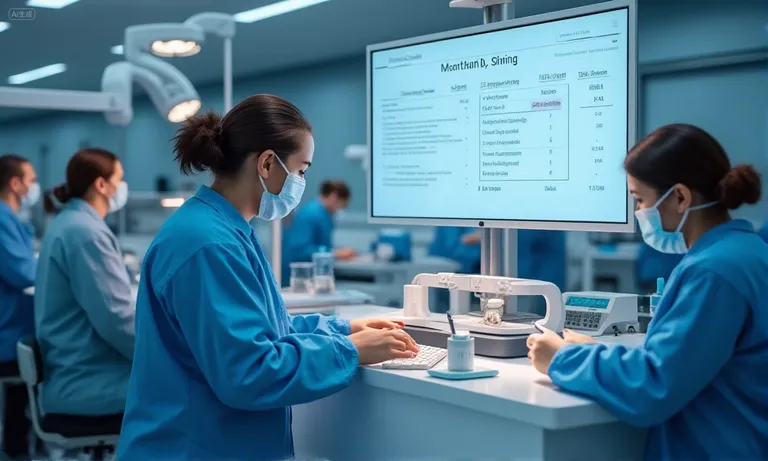
dental-implant-turnaround-time-management
What are standard turnaround times for dental implant restorations
Most implant restorations follow defined timeframes depending on case complexity:
- Single-unit crowns and abutments → typically 5–7 working days
- Multi-unit bridges or hybrid cases → often require 10–15 working days
- Full-arch restorations → may extend to 20+ working days due to detailed design and verification
These benchmarks help clinics align patient scheduling with lab production capacity, reducing chairside delays. Some industry references, such as the National Dentex turnaround calendar, list implant restorations at around 10 working days, which matches common clinical expectations.
How to manage urgent implant cases without compromising quality
Urgent needs—such as last-minute surgical changes or fractured temporaries—require labs with defined rush capabilities. Effective features include:
- Rush service protocols with guaranteed fast turnaround (e.g., 48–72 hours)
- Production prioritization systems ensuring standard orders stay on track
- Dedicated channels for urgent requests that preserve quality control
Clinics rely on these systems to meet patient needs promptly without sacrificing accuracy.
Why consistent delivery builds trust in long-term collaboration
Reliability matters as much as speed. Procurement teams should assess:
- If the lab consistently meets promised delivery dates
- How logistics delays (e.g. customs) are handled
- Whether contingency plans (alternate couriers or buffer stock) are in place
Consistent delivery reflects operational maturity and scalability—key for growing implant volumes.
How Labs Maintain Continuous Improvement in Digital Workflows for Long-Term Partnerships
Long-term collaboration in implant dentistry requires more than just meeting today’s case requirements. A reliable lab must continuously refine its digital workflows—through staff training, cross-disciplinary collaboration, and technology adoption—to remain a dependable partner as clinical expectations evolve. Procurement teams that evaluate a lab’s improvement culture reduce the risk of workflow stagnation and ensure smoother integration in the future.
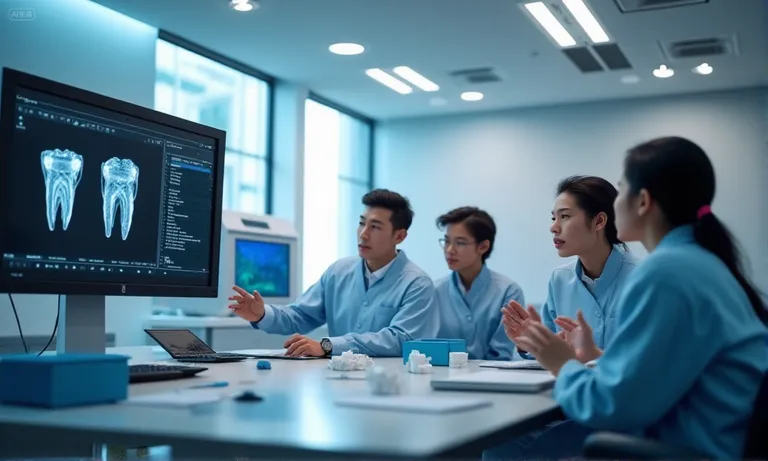
dental-lab-staff-digital-training
Why choosing a lab that invests in staff training matters
Dental technology evolves quickly, and labs that provide structured training ensure technicians stay updated on new CAD/CAM tools, material science, and implant system integrations. For example, the NADL Learner Community virtual training catalog offers numerous online courses that keep lab teams aligned with digital workflow advances and industry standards.
How cross-training improves collaboration between clinic and lab
Cross-training encourages technicians to understand clinical workflows and clinicians to better grasp lab processes. This shared knowledge improves communication and reduces costly missteps, such as unclear scan data or misinterpreted margin designs. Labs that promote joint webinars, digital case reviews, or in-person training foster a culture of collaboration that benefits both sides.
What ongoing updates and technology adoption mean for procurement
A lab’s willingness to invest in updated scanners, milling machines, and software upgrades directly impacts case predictability. For instance, Dentistry.co.uk reported that 3Shape Dental System 2024 includes AI-driven design automation, faster case management, and enhanced workflow integration—showing how software improvements can dramatically elevate lab efficiency and collaboration.
Labs that continuously invest in people and tools build resilience against industry changes. For procurement teams, this signals a partner capable of long-term alignment, not just a transactional vendor.
Conclusion
Evaluating collaboration and digital workflow compatibility in dental implant cases is essential for building trust and ensuring predictable outcomes. Labs that invest in training, adopt new technologies, and maintain transparent communication provide greater reliability in complex restorative work. For procurement teams, the value lies not only in precision but also in the ability to scale, adapt, and support clinicians effectively. By choosing an overseas dental lab committed to continuous improvement, clinics can secure a long-term partner that reduces risk, streamlines digital integration, and consistently delivers restorations that meet global standards.


